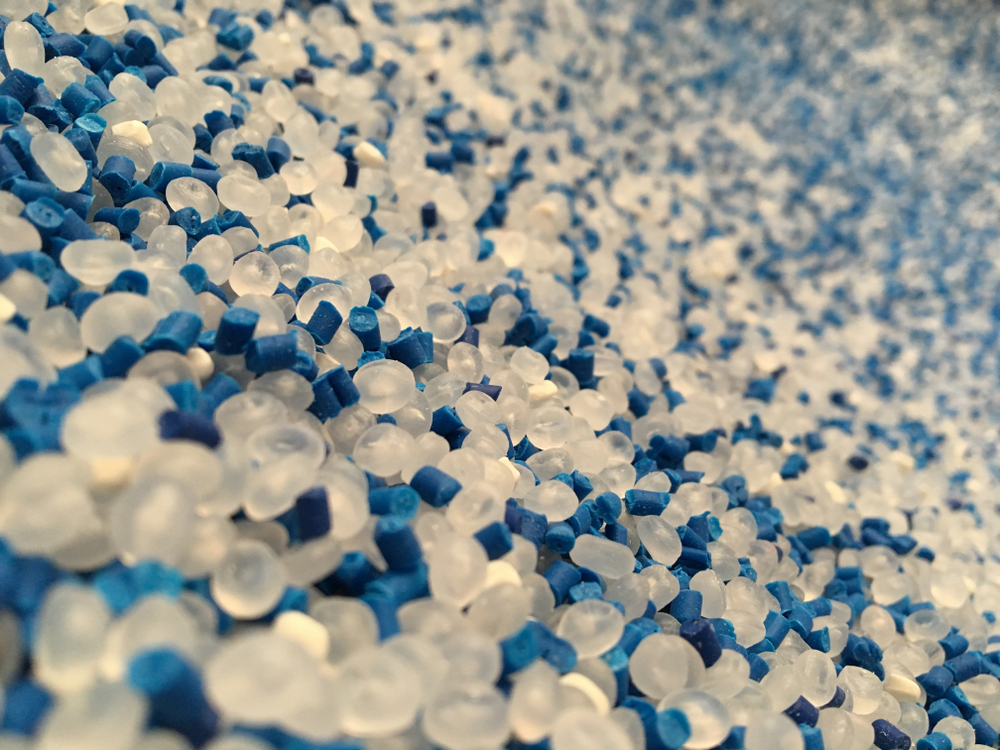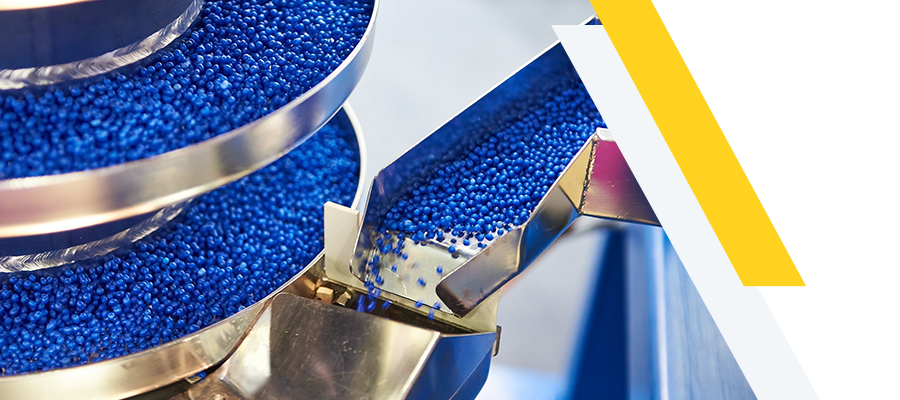
Density of Plastic: Technical Guide

Density of plastic is one of the main factors that affect polymers processing directly. By determining the density, you will be able to understand your datasheet perfectly. That is why in this article we will cover all regards the plastic material density through some questions:
- What is plastic density?
- Why is plastic density so important?
- How can you calculate the plastic density?
- How to reduce the plastic density of the plastic material?
- Comprehinsive guide to density values of several plastic raw materials.
Go deeper to know more about plastic density secrets, we will go over the most important question about plastic density, let’s get started!
1. What is plastic density & how to determine it?
Plastic density presents the total mass of the material divided by the total volume of the material. So, the density is 1 kilogram per cubic meter or 1 gram per cubic meter.
D=M/V ___ Density=Mass/Volume
To determine the density of plastic materials, you have two options. The first one is to test the solid plastics in water, the second is to test the solid plastic in a liquid other than water. The first choice is the more common test that can be performed with plastic sheets.
2. Why Knowing plastic raw materials density is so important?
As we mentioned, the material density measures the mass per unit volume. It can play a crucial role in the production process. But do you know that you can save storage costs by determining the right density?
Density importance came from the fact that the processors often measure productivity depending on the materials’ weight.
3. What is bulk density & how can it help you?

You also have to be aware of bulk densities. Different materials have different bulk densities. That’s why the bulk density is extremely critical.
The bulk density of plastic materials is the weight of material depending on the specific volume. You can express bulk density in (g/cc) gram per cubic centimeter, (b/cu ft) pounds per cubic foot and (KG/L) Kilogram per liter.
For instance, if you want to determine the bulk density of PET Material, the virgin PET density differs from PET sheets.
When it comes to drying operations, bulk density plays the biggest role. You must first determine the materials’ weight to choose the right temperature range for the material residence period.
4. How does bulk density affect the material flow?
It is not only about the drying operation, but bulk density also affects the material flow, Let’s take some examples to see how:
- Plastic material with lower bulk densities requires more receiver cycle. This affects material transport throughput to achieve higher production.
- Plastic flaky light material such as PE, PP and regrind sheet PET doesn’t flow very well. This type of materials will cling to Equipment as it can’t flow easily. Here comes the role of flow characteristics testing to know when to add flow enhancements. You can choose between many flow enhancements such as mechanical agitation and compressed air pucks.
5. What is the difference between plastic density and specific gravity?
As we mentioned, density is the mass per unit volume under the normal pressure and normal temperature. When it comes to the specific gravity, it presents a specific value of the material under normal pressure and temperature.
The main difference between them is that you cannot measure specific gravity as it has no measurements units.
You can measure the specific density of the plastic material by dividing the density of the object on the density of the water.
6. How to reduce the plastic density of the plastic material?
In many cases, you need to reduce the plastic density of the plastic material to be suitable for your application. That’s why we collected these methods for you:
- Foaming: You can reduce the density by foaming molding. It is considered the most effective way as you can add light material and blend it. By this method you can decrease 50% of the density.
- Blending Resins: it’s another way to reduce density by adding low density blends such as ABS (ACRYLONITRILE BUTADIENE STYRENE)/ PP & PE.
- Light fillers adding: You can decrease the density slightly by adding light fillers such as PP, PE, AND CPE (Chlorinated polyethylene).
7. How can you determine the density of the main 7 main types of plastic?
GAP Polymers provides you with this table below that contains the main 7 types of plastic density that are calculated by dividing the mass of the material by the volume and is expressed normally in g/cm3.
| Material | Desnity |
| PET (Polyethylene Terephthalate) | 1.38 |
| HDPE (High Density Polyethylene) | 0.941 |
| PVC (Polyvinyl Chloride) | 1.38 |
| LDPE (Low Density Polyethylene) | 0.910: 0.940 |
| PP (Polypropylene) | 0.905 |
| PS (Polystyrene) | 0.96: 1.05 |
Suggested Blogs

Exclusive vs. Non-exclusive Distributor
GAP Polymers Team
Have you ever wanted to know the difference between the exclusive and the non-exclusive polymer distributers, GAP polymers will help you to know the main differences between them.

An Overview of Polypropylene Thermoforming Process
GAP Polymers Team
PP is the second most popular plastic resin in the world used across many industries. Thermoforming PP has become a process of choice for many manufactures due to its versatility low cost , and more.

Weekly Plastic News & Resins Pricing
GAP Polymers Team
A weekly coverage of all you need to know about the international plastic industry including resin pricing, trends, market insights, and more.

A Deeper Look Into Plastic Manufacturing Industry
GAP Polymers Team
Keep up with the rapid changes of the plastic manufacturing industry and dive deep into what shapes the polymer industry and how to choose the best raw material supplier for your business.

Polymer Industry Updates: What's coming up in 2023?
GAP Polymers Team
2023 is a critical year in the polymer industry at all levels. Global polymers market size is expected to grow finally after the economic recovery from the pandemic.

Top Plastic Raw Material Suppliers
GAP Polymers Team
The polymer industry is facing continues challenges and choosing the best supplier is getting harder. Look no further and explore the full list of the top plastic raw material suppliers.